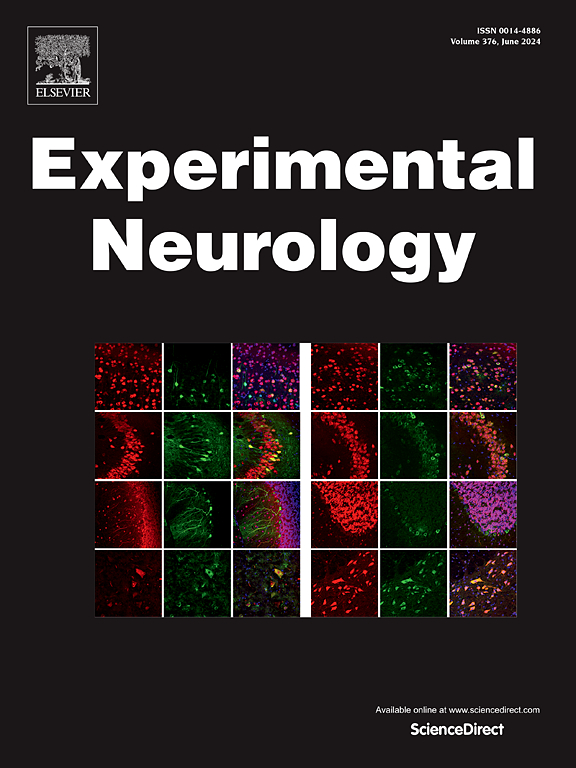CCL2/CCR2 signaling-mediated microglial migration leads to cerebral small vessel dysfunction in chronic hypertension model rats
IF 4.6
2区 医学
Q1 NEUROSCIENCES
引用次数: 0
Abstract
Microglia are cerebral immune cells that maintain brain homeostasis; those that are juxtaposed to vessels are sometimes called vessel-associated microglia (VAM). Recent studies have indicated a role for VAM in maintaining blood–brain barrier integrity in different stages of diseases such as ischemic stroke and systemic inflammatory disease. Hypertension is a major cause of cerebral small vessel disease (CSVD) in humans. Recently, several reports reported that microglial activation in hypertensive animal models and our previous report indicated the increase in VAM from the early stage of chronic hypertension. However, the precise involvement of VAM in hypertensive CSVD remains unclear. In the present study, we used a deoxycorticosterone-acetate-salt chronic hypertensive rat model to demonstrate that signaling via C![]() C motif chemokine ligand 2 (CCL2) and its receptor C
C motif chemokine ligand 2 (CCL2) and its receptor C![]() C chemokine receptor type 2 (CCR2) is crucial for the increase in VAM. This signaling was associated with microglial migration toward vessels at the early disease stage. Moreover, the inhibition of this signaling resulted in reduced VAM numbers and the preservation of astrocytic endfeet in the late disease stage. Overall, CCL2/CCR2 signaling may be a trigger for microglial migration, leading to the development of CSVD, during chronic hypertension. This signaling is therefore a potential target for future preventive treatments.
C chemokine receptor type 2 (CCR2) is crucial for the increase in VAM. This signaling was associated with microglial migration toward vessels at the early disease stage. Moreover, the inhibition of this signaling resulted in reduced VAM numbers and the preservation of astrocytic endfeet in the late disease stage. Overall, CCL2/CCR2 signaling may be a trigger for microglial migration, leading to the development of CSVD, during chronic hypertension. This signaling is therefore a potential target for future preventive treatments.

求助全文
约1分钟内获得全文
求助全文
来源期刊

Experimental Neurology
医学-神经科学
CiteScore
10.10
自引率
3.80%
发文量
258
审稿时长
42 days
期刊介绍:
Experimental Neurology, a Journal of Neuroscience Research, publishes original research in neuroscience with a particular emphasis on novel findings in neural development, regeneration, plasticity and transplantation. The journal has focused on research concerning basic mechanisms underlying neurological disorders.
 求助内容:
求助内容: 应助结果提醒方式:
应助结果提醒方式:


